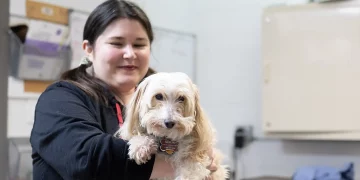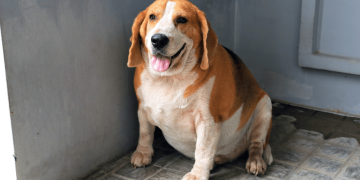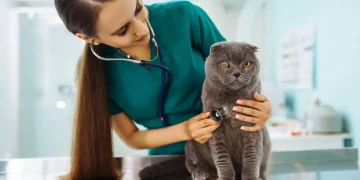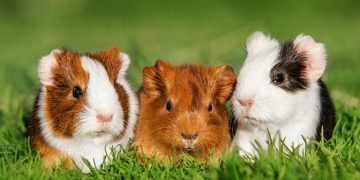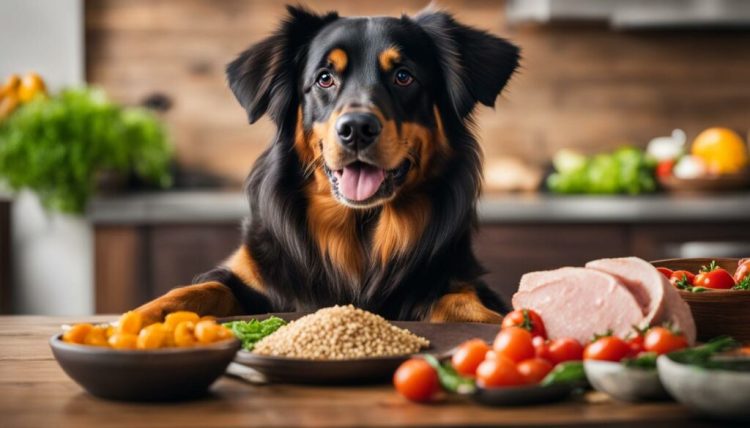As the seasons change, so do the needs of your pet. Just like humans, pets’ dietary requirements may vary depending on the weather, their activity levels, and overall health throughout the year. Understanding how to adjust your pet’s diet according to the changing seasons can help ensure they remain healthy, active, and comfortable all year round.
In this article, we’ll explore how you can adjust your pet’s diet for each season, paying attention to factors like hydration, caloric needs, and specific nutritional adjustments based on seasonal changes.
1. Adjusting Your Pet’s Diet for Winter
Winter can bring about several challenges for pets, including colder temperatures, reduced exercise, and changes in their coat condition. Here’s how you can modify your pet’s diet to help them stay healthy during the winter months:
1.1. Increase Caloric Intake for Active Pets
During the colder months, your pet may burn more calories to keep warm, especially if they spend time outside or are more active. If you have an outdoor dog or an active cat, you might need to increase their caloric intake to maintain their energy levels. Higher calorie foods can help keep your pet warm and support their immune system during the winter.
1.2. Adjust Portion Sizes for Less Active Pets
On the flip side, pets who are less active in the winter (due to shorter days or colder temperatures) may not require as many calories. If your pet tends to sleep more or goes on fewer walks during winter, you may want to reduce their portion size to prevent weight gain. Overfeeding during the winter months can lead to obesity and other health problems in the long term.
1.3. Increase Omega-3 Fatty Acids for Coat Health
Winter weather can dry out your pet’s skin and coat, especially in indoor pets who are exposed to heating systems. To help combat this, consider adding foods that are rich in omega-3 fatty acids, such as salmon or fish oil, to your pet’s diet. Omega-3s can help improve coat health, reduce itching, and combat dry skin during the cold months.
1.4. Hydration
Although your pet may not be as thirsty in the winter as they are in the warmer months, it’s still important to ensure they have access to fresh water. Dry, heated indoor environments can lead to dehydration, so encourage your pet to drink enough water. Some pets may enjoy a bit of low-sodium broth added to their water during the winter months to encourage hydration.
2. Adjusting Your Pet’s Diet for Spring
Spring is a time of renewal, and it’s also when many pets become more active after a long winter. With increased activity levels and warmer weather, there are some dietary adjustments to consider:
2.1. Support Increased Activity with Balanced Nutrition
As the weather warms up, pets typically become more active, engaging in longer walks, outdoor play, and more exercise. You may need to adjust their diet by increasing their caloric intake to support their energy expenditure. However, it’s important not to overfeed, so consult your veterinarian to determine the appropriate portion sizes.
2.2. Seasonal Allergies and Diet
Spring brings pollen, grasses, and other allergens that can trigger seasonal allergies in pets. If your pet experiences seasonal allergies, talk to your vet about dietary changes that could support their immune system and help with allergy symptoms. Some foods contain antioxidants, like vitamin C and omega-3 fatty acids, which may help combat inflammation and irritation caused by allergies.
2.3. Fresh Fruits and Vegetables
Spring is a great time to introduce fresh, seasonal fruits and vegetables into your pet’s diet (if they’re safe for them). Items like berries, leafy greens, and carrots are great for dogs, while cats may benefit from small amounts of fresh cat-safe veggies. Adding fiber-rich foods can help with digestion as your pet becomes more active in the spring.
3. Adjusting Your Pet’s Diet for Summer
Hot weather and increased outdoor activities mean that your pet’s dietary needs will change in the summer. High temperatures can impact your pet’s energy levels, hydration needs, and appetite. Here’s how to adapt their diet for the summer months:
3.1. Increase Hydration
Summer heat can lead to dehydration, especially in pets that are very active outdoors or are exposed to hot temperatures. Always ensure your pet has access to fresh water, and encourage them to drink more throughout the day. You can also provide ice cubes or frozen treats made from pet-safe ingredients to help them cool down.
3.2. Lighter, Low-Calorie Meals
In hot weather, pets often become less active and may have a reduced appetite. You may want to adjust their meals by offering lighter, lower-calorie foods to prevent overfeeding and obesity. If your pet is less interested in eating during the summer, try offering smaller meals more frequently or foods with higher moisture content (like wet food for dogs and cats).
3.3. Keep the Weight in Check
During the summer months, it’s easy for pets to gain weight if they’re not as active or if they get too many treats during outdoor playtime. Make sure to monitor your pet’s weight regularly and adjust their portion sizes to prevent unnecessary weight gain. Using food-dispensing toys or treats in moderation can help keep them entertained without overeating.
3.4. Special Summer Foods
There are also specific summer treats that can benefit your pet, especially for hot days. Frozen treats made from dog-friendly fruits like watermelon or blueberries are great options to keep your pet cool and hydrated. Just be sure that these treats are appropriate for your pet and are given in moderation.
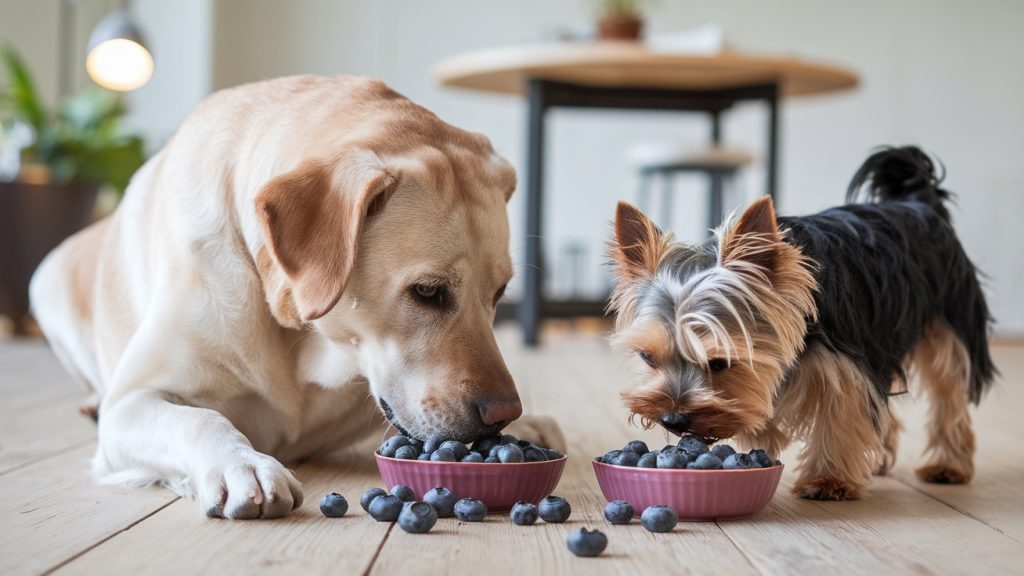
4. Adjusting Your Pet’s Diet for Fall
Fall is a transitional season, and pets may be adjusting to a shift in both their environment and activity levels. As temperatures cool and the weather becomes more pleasant, here are some tips for adjusting your pet’s diet during the autumn months:
4.1. Gradual Caloric Adjustment
As the cooler weather encourages more outdoor activity, your pet may begin to exercise more in the fall. You may need to gradually increase their caloric intake as they become more active, especially if they’ve been less active during the summer. Keep an eye on their weight and adjust portion sizes accordingly.
4.2. Boost Immune Health
With the start of cold and flu season for humans, it’s important to help boost your pet’s immune system as well. Adding foods that are rich in vitamins, antioxidants, and minerals (like vitamin C and zinc) can help support your pet’s health. You can also add supplements or foods rich in omega-3 fatty acids to help boost their immunity as the weather changes.
4.3. Fall Foods for Pets
Seasonal fruits like pumpkins (which are rich in fiber and vitamin A) and sweet potatoes can be a great addition to your pet’s diet in the fall. Both of these foods are easy to digest and can support gastrointestinal health. You can cook and puree these items for your dog, but remember to avoid adding any spices or sugars. Cats, however, might not enjoy pumpkin, so it’s best to stick with their regular food unless recommended otherwise by your veterinarian.
4.4. Preparing for Winter
As the weather turns cooler, start preparing your pet for the coming winter months. This might mean increasing their calorie intake gradually, adding more fatty acids to their diet to maintain a healthy coat, and ensuring they’re getting all the necessary vitamins and minerals.
Conclusion
Adjusting your pet’s diet according to the seasons is an important aspect of maintaining their health and well-being throughout the year. By being mindful of the temperature changes, activity levels, and specific dietary needs of each season, you can ensure that your pet stays healthy, comfortable, and active. Whether it’s increasing hydration in the summer or adjusting their calorie intake in winter, small dietary adjustments can make a big difference in your pet’s overall health.
Remember to always consult with your veterinarian if you’re unsure about how to adjust your pet’s diet or if you notice any changes in their eating habits or behavior. They can provide expert guidance tailored to your pet’s individual needs, ensuring they receive the right nutrition year-round.













